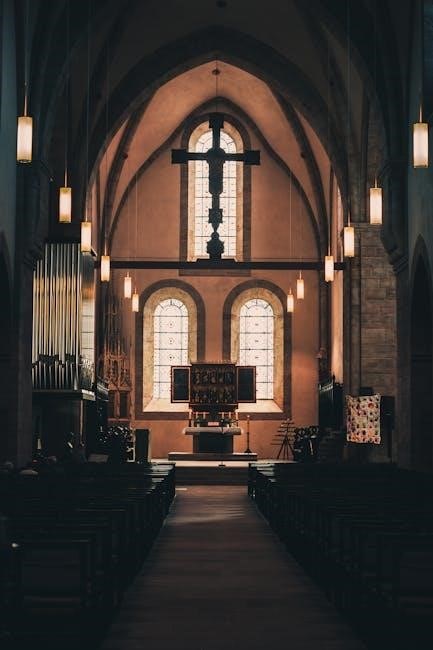the sacred mushroom and the cross pdf

The Sacred Mushroom and the Cross: An Overview
John M. Allegro’s The Sacred Mushroom and the Cross, published in 1970, proposes a controversial theory. It explores Christianity’s origins, linking them to ancient Near Eastern fertility cults and the psychoactive Amanita muscaria mushroom. The book suggests surprising linguistic connections.
John M. Allegro and the Book’s Thesis
John Marco Allegro, a biblical scholar, authored The Sacred Mushroom and the Cross. His central thesis posits that Jesus Christ did not exist as a historical figure. Allegro controversially claims that the Gospels are a fabricated hoax. He argues that Christianity originated from ancient fertility cults in the Near East. These cults, according to Allegro, centered around the worship of the Amanita muscaria mushroom. He further suggests this mushroom was used for its psychedelic properties. The book explores the idea that early religious experiences were induced by this entheogen. Allegro’s work challenges traditional understandings of Christian origins and history.

Publication and Availability
The Sacred Mushroom and the Cross was published by Doubleday. It is now available in various formats. These include paperback, PDF, and online versions. Some libraries also offer the book for borrowing to the public.
PDF Downloads and Online Access
Numerous online resources offer PDF downloads of The Sacred Mushroom and the Cross. These downloads provide convenient access to Allegro’s work for researchers and interested readers. Several online archives and digital libraries host the book in PDF format, often as scanned versions of the original publication. Some sites provide options for single-page processing or JP2 ZIP downloads.
Before downloading, users should be aware of copyright considerations and support authors or libraries when possible. Kindle users can also access the PDF by sending it to their devices via web, app, or email, making it easily accessible.

Core Arguments and Controversies
Allegro’s core argument centers on the entheogenic origins of religion. This sparked considerable controversy. He posited that Christianity stemmed from ancient fertility cults, a claim that challenged traditional views and generated significant debate.
The Entheogenic Origins of Christianity
Allegro’s most provocative assertion is that Christianity’s roots lie in ancient Near Eastern fertility cults, specifically those utilizing entheogens. He contends that the figure of Jesus Christ is not historical. Instead, he argues, Jesus is a symbolic representation of the effects of the Amanita muscaria mushroom within these ancient religious practices. Allegro suggests that early Christians consumed this mushroom to achieve spiritual enlightenment. This created a shared religious experience that was then codified into the narratives found in the Gospels. This theory directly challenges the accepted historical basis of Christian faith.
Amanita Muscaria as the Central Symbol
At the heart of Allegro’s thesis is the Amanita muscaria mushroom, which he posits was a central symbol in ancient fertility cults. He argues that this mushroom, with its psychoactive properties, was revered as a source of spiritual insight and divine connection. Allegro connects its imagery and effects to various elements within the Christian narrative. He interprets the cross, for example, as a symbolic representation linked to the mushroom. Allegro’s analysis suggests that the mushroom’s effects were misinterpreted over time. This ultimately led to the development of the Christian religion as we know it;
Philological Analysis and Linguistic Connections
Allegro’s work hinges on his philological analysis, exploring linguistic connections between ancient languages. He aimed to reveal a hidden layer of meaning related to fertility cults and the role of the Amanita muscaria mushroom in religious practices.
Allegro’s Interpretation of Ancient Languages
Allegro’s interpretation of ancient languages forms a cornerstone of his controversial thesis in “The Sacred Mushroom and the Cross.” He delves into Semitic languages, Sumerian, and others, seeking to uncover what he believed were hidden meanings related to fertility cults and the entheogenic use of mushrooms. His approach involved identifying root words and tracing their evolution across different languages, arguing that these roots revealed a common, underlying religious practice centered around the Amanita muscaria mushroom. He posited that these linguistic connections demonstrated the pervasive influence of these cults on the development of religious thought and practice in the ancient Near East.
Criticism and Rebuttals
The Sacred Mushroom and the Cross faced substantial criticism from scholars across various disciplines. Allegro’s linguistic interpretations and his central thesis were widely challenged for lacking sufficient evidence and rigor, leading to strong rebuttals.
Scholarly Responses to Allegro’s Claims
John Allegro’s The Sacred Mushroom and the Cross ignited considerable debate within academic circles. His claims regarding the entheogenic origins of Christianity and the role of Amanita muscaria were met with skepticism and strong opposition from many scholars. Linguists questioned the validity of Allegro’s etymological connections, arguing that his interpretations were often speculative and lacked robust linguistic support. Religious scholars and historians criticized his methodology, asserting that his conclusions were based on selective evidence and disregarded established historical and theological frameworks. Many found his thesis to be a radical oversimplification of complex religious phenomena, ultimately undermining the credibility of his arguments. The book remains a controversial work.

Symbolism and Religious Artifacts
Allegro explores the symbolic representation of mushrooms, especially Amanita muscaria, in ancient religious artifacts. He suggests these symbols reveal the mushroom’s central role in ancient cults and its connection to early religious practices and beliefs.
Mushroom Symbolism in Ancient Cultures
John Allegro’s analysis in The Sacred Mushroom and the Cross delves into the pervasive symbolism of the Amanita muscaria mushroom within diverse ancient cultures. He posits that the mushroom’s distinctive imagery, often subtly embedded in religious art and texts, reveals its profound significance beyond mere sustenance. Allegro suggests that the mushroom served as a key element in spiritual practices, representing fertility, divinity, and pathways to altered states of consciousness. His research examines artifacts and linguistic roots to demonstrate the mushroom’s coded presence, arguing it was a central, yet often concealed, component of early religious expression and ritualistic practice across various ancient societies, connecting them through shared symbolic language.

Fertility Cults and Ancient Near East
Allegro connects Christianity’s origins to ancient Near Eastern fertility cults. His analysis suggests that the rituals and beliefs of these cults, centered on themes of procreation and nature’s cycles, influenced early Christian symbolism.
The Role of Fertility Cults in Allegro’s Theory
Allegro posits that fertility cults of the ancient Near East served as the bedrock for early Christianity. He argues these cults, deeply rooted in agrarian societies, revered the life-giving forces of nature. Allegro connects the worship of deities associated with fertility, agriculture, and procreation to the symbolic language found within the Gospels. He claims that the rituals, myths, and iconography of these cults were subtly encoded into Christian narratives. According to Allegro, the Amanita muscaria mushroom held a central position in these cults. The mushroom was viewed as a sacred symbol of fertility and spiritual enlightenment. Allegro’s interpretation of the Gospels suggests that Christian sacraments and beliefs are veiled references to ancient fertility rites.
The Gospels as a Hoax
Allegro controversially viewed the Gospels not as historical accounts but as deliberately constructed allegories. He argued that they were encoded texts concealing the secrets of an ancient, mushroom-worshipping fertility cult, essentially labeling them a “hoax”.
Allegro’s View on the Authenticity of the Gospels
Allegro’s perspective on the Gospels’ authenticity was radically unconventional. He dismissed them as literal historical accounts, asserting instead that they were carefully crafted allegories. These narratives, according to Allegro, served to conceal the practices and beliefs of a hidden, ancient fertility cult. He specifically pointed to the use of psychoactive mushrooms, particularly Amanita muscaria, within these cults, suggesting the Gospels were a coded means of transmitting knowledge about their rituals and the role of the mushroom. Therefore, in Allegro’s view, the Gospels were not genuine records, but rather a form of disguised religious instruction.
Legacy and Influence
Despite facing strong criticism, Allegro’s The Sacred Mushroom and the Cross left a mark. It sparked debate about the interpretation of religious texts and the possible influence of entheogens on ancient beliefs.
The Book’s Impact on Religious Studies
The Sacred Mushroom and the Cross, despite its controversial nature, significantly impacted religious studies. It challenged conventional interpretations of the Bible and ancient religious practices. Allegro’s work prompted scholars to consider alternative perspectives on the origins of Christianity, even if they disagreed with his conclusions. The book’s emphasis on philology and linguistic analysis influenced subsequent research into the etymological roots of religious concepts. While many academics dismissed Allegro’s central thesis, his work raised important questions about the role of cultural context and altered states of consciousness in the development of religious traditions. It encouraged a more critical examination of established narratives.
Resources and Further Reading
To delve deeper into Allegro’s thesis, the book is available for PDF download online. Readers can explore related works on entheogens, religious etymology, and ancient Near Eastern fertility cults for broader context and perspectives.
Where to Find the Book and Related Materials
The Sacred Mushroom and the Cross is accessible through various online platforms, often available as a PDF download. Sites like the Internet Archive offer digital versions for free access. It’s also advisable to check local libraries for physical copies. For related materials, explore books and articles on religious etymology, ancient Near Eastern history, and entheogenic studies. Academic databases and online libraries provide a wealth of scholarly resources. Consider searching for works that critique or support Allegro’s theories for a balanced understanding. Exploring books discussing the influence of fertility cults and mushroom symbolism in ancient religions can also provide additional context.